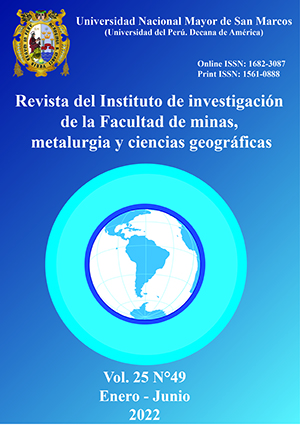The hazardous waste generated in the Peruvian textile industry: Haute couture, alpaca fiber and tannery
DOI:
https://doi.org/10.15381/iigeo.v25i49.21097Keywords:
Haute couture, tannery, excreta, alpaca fiber, hazardous waste, textile waste, hazardous waste treatment.Abstract
The research cites the various hazardous waste generated in the textile industry. The method used is descriptive and comparative, the process consisted of the search and evaluation of information, both nationally and internationally. The results indicate: (1) Waste is generated from the alpaca fiber industry in the various stages of camelid rearing, they stand out for their dangerousness: excreta, residual fiber and yarn scraps. (2) The main hazardous waste generated by the tannery industry are: grease, hides, hair, plastic containers with traces of toxic substances, chips and pieces of leather with chrome. (3) Three companies' Solid Waste Management Plans were analyzed, randomly selected, and none of them detail waste treatment processes and warn of the lack of supervision by the authorities. It is concluded that the hazardous waste generated can affect human and environmental health. On the other hand, there is the possibility of taking advantage of certain hazardous waste such as manure and alpaca fiber, after treatment; while non-hazardous waste from the tannery such as yarn, panel weaving, cloth, scraps and thread; can be used to produce new products, generating a production chain in favor of the entrepreneur himself.
Downloads
Published
Issue
Section
License
Copyright (c) 2022 Alberto Huiman Cruz

This work is licensed under a Creative Commons Attribution 4.0 International License.
AUTHORS RETAIN THEIR RIGHTS:
a. Authors retain their trade mark rights and patent, and also on any process or procedure described in the article.
b. Authors retain their right to share, copy, distribute, perform and publicly communicate their article (eg, to place their article in an institutional repository or publish it in a book), with an acknowledgment of its initial publication in the Rev. Inst. investig. Fac. minas metal cienc. geogr.
c. Authors retain theirs right to make a subsequent publication of their work, to use the article or any part thereof (eg a compilation of his papers, lecture notes, thesis, or a book), always indicating the source of publication (the originator of the work, journal, volume, number and date).






